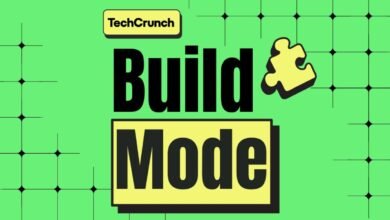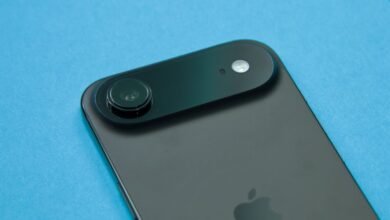iOS 26.1 Beta Battery Test: Tinted vs Clear Mode Drain

▼ Summary
– Apple introduced a “Tinted” Liquid Glass option in iOS 26.1 beta to reduce translucency for users preferring a more opaque look.
– The author conducted controlled battery tests on an iPhone 17 Pro Max using identical settings across four different Liquid Glass configurations.
– Testing involved 2.5-hour sessions of common activities like social media, web browsing, and navigation to simulate real-world usage.
– Results showed no significant battery life difference between Clear, Tinted, or combined accessibility settings like Reduce Transparency and Motion.
– The author concluded that Liquid Glass settings do not meaningfully impact battery life, with visual preferences being the only reason to adjust them.
Every iOS update carries a mix of quiet design changes and public speculation. When Apple rolled out the iOS 26.1 beta with a Tinted version of its Liquid Glass interface, users began asking a familiar question: could this be a hidden power-saving feature?
Liquid Glass defines how iOS blends background blur, transparency, and depth , a subtle visual layer visible across the Home Screen, Control Center, and system menus. By introducing a darker tint, Apple seemed to offer an aesthetic tweak that might also ease the display’s workload, at least in theory.
To find out, a controlled test was set up using an iPhone 17 Pro Max running iOS 26.1 beta. The aim: to determine whether different transparency levels , specifically Clear versus Tinted Liquid Glass , produced measurable differences in battery performance.
The testing conditions were carefully standardized:
- Display settings: Light Mode active, with True Tone and Night Shift disabled.
- Brightness: locked at 50 percent.
- Battery health: 100 percent.
- Ambient temperature: maintained between 68°F and 72°F.
- Notifications: left on to simulate real-world activity.
To keep each test consistent, the iPhone’s Home Screen displayed default app icons, and every run began at 80 percent battery. Each session lasted exactly two and a half hours under continuous screen use.
A Reproducible Routine
The testing process was structured around a fixed, repeatable sequence of daily activities, totaling 150 minutes per configuration. It included:
- 30 minutes of TikTok scrolling
- 30 minutes of YouTube playback
- 30 minutes on Instagram browsing posts and Stories
- 30 minutes of web navigation via Safari
- 30 minutes of live map usage in Apple Maps
Between each segment, the tester returned to the Home Screen, opened the search bar, typed the next app name, and launched it manually. This simulated natural transitions between tasks rather than scripted automation.
Notifications were left on to replicate interruptions during everyday use. During every 30-minute block, the Lock Screen and Control Center were accessed four times each, for a total of twenty interactions per full test. After every round, the phone was recharged back to 80 percent to start fresh.
What the Data Revealed
Despite early assumptions that darker interface layers could reduce display power draw, the outcome was almost indistinguishable between modes.
After two and a half hours of continuous use:
- Clear Liquid Glass ended at 70 percent battery
- Tinted Liquid Glass ended at 69 percent battery
That one-percent difference falls squarely within the natural margin of error, meaning no measurable gain.
Segment-level analysis offered more granularity but little surprise:
- TikTok: 79%
- YouTube: 77%
- Instagram: 74%
- Safari: 72%
- Maps: 70%
Reordering app usage slightly altered the per-segment readings, but never beyond expected variance. The conclusion remained consistent: Tinted mode did not yield any significant reduction in battery drain.
Understanding Why
Part of the misconception comes from associating darker visuals with lower energy consumption , a valid assumption on OLED displays when using true black, as in Dark Mode. But Apple’s Tinted Liquid Glass is semi-transparent, not black. The effect is mostly graphical, rendered by the GPU and compositing system rather than changing pixel brightness.
On a modern device like the iPhone 17 Pro Max, Apple’s A19 Pro chip and display engine are optimized to handle transparency effects efficiently. The system dynamically manages energy use across rendering tasks, making small visual differences virtually invisible in power metrics.
In short: the Tinted option adds aesthetic flavor, not measurable efficiency.
What This Means for Users
For iPhone 17 series users , and likely future models , Liquid Glass settings should be treated as personal preference, not performance tuning. Apple’s interface design emphasizes consistency and visual polish, and both the Clear and Tinted options fall comfortably within the same performance envelope.
However, it’s possible that older iPhones might behave differently. Devices with older GPUs and less optimized display controllers could, in theory, show small variations in energy handling. Those differences, though, would still be marginal at best.
The test also highlights how real-world usage affects battery results far more than UI transparency ever will. Apps like TikTok and Instagram , heavy on video playback and network activity , dominate battery consumption, dwarfing the effects of graphical overlays.
The Practical Takeaway
For those seeking longer battery life, Apple already provides proven methods:
- Low Power Mode, which reduces background activity and refresh rates.
- Adaptive Power Mode, available in iOS 17 and newer, which learns from charging patterns.
- Dark Mode, which genuinely reduces OLED power draw.
- Lower screen brightness, still the single most effective adjustment.
In day-to-day use, tweaking the Liquid Glass setting will do little for performance. But as Apple continues refining iOS aesthetics, the Tinted option adds subtle depth and customization to an interface that’s remained largely unchanged since iOS 7 , a small but welcome touch for users who appreciate visual design. style.
(Source: Mac Rumors)




